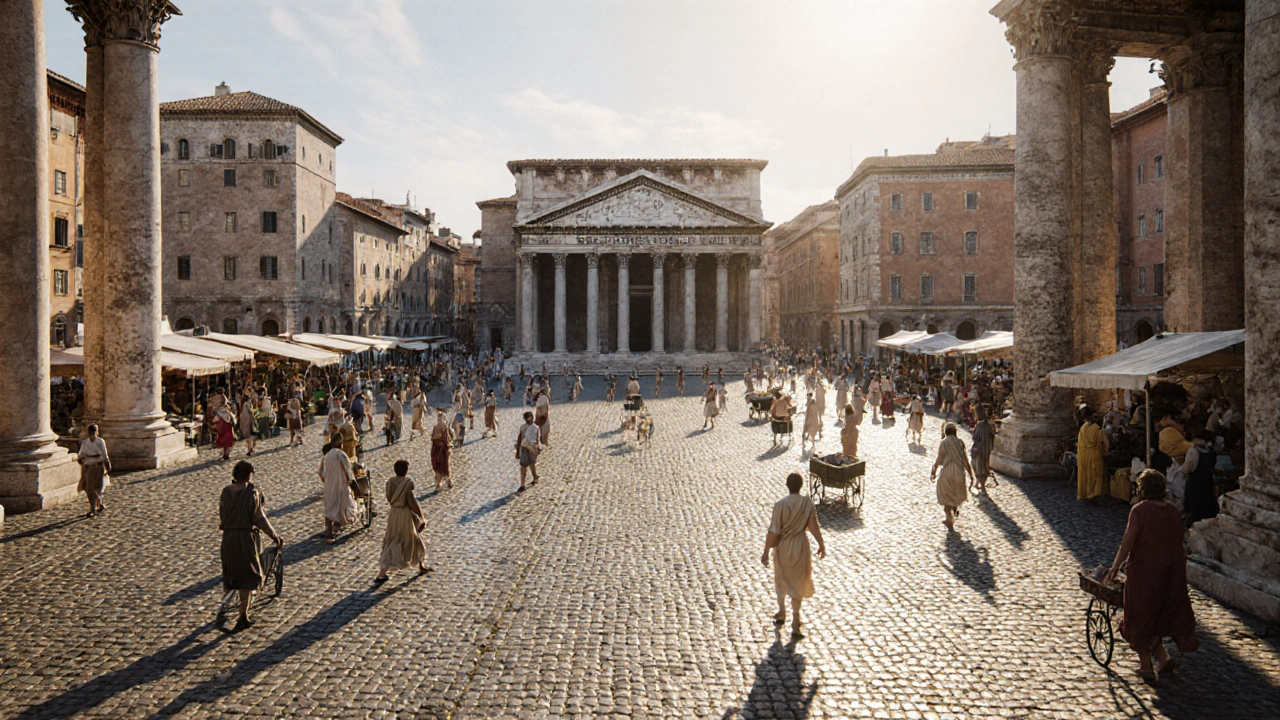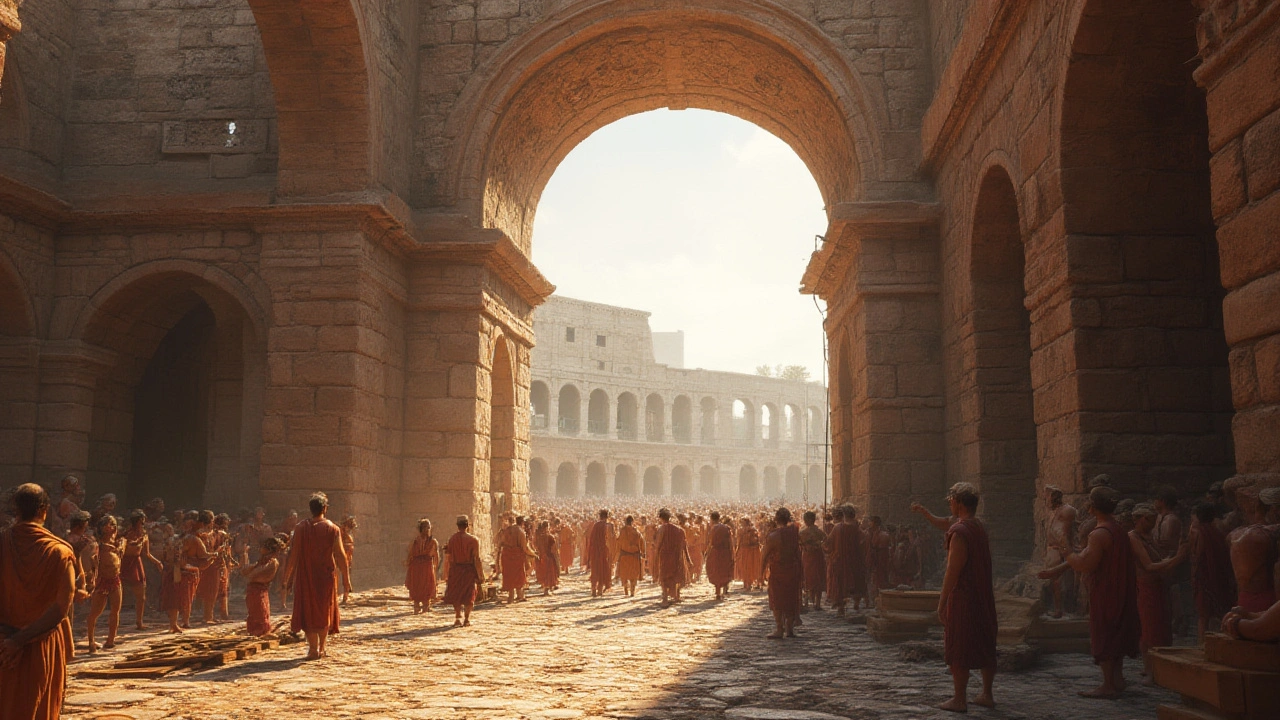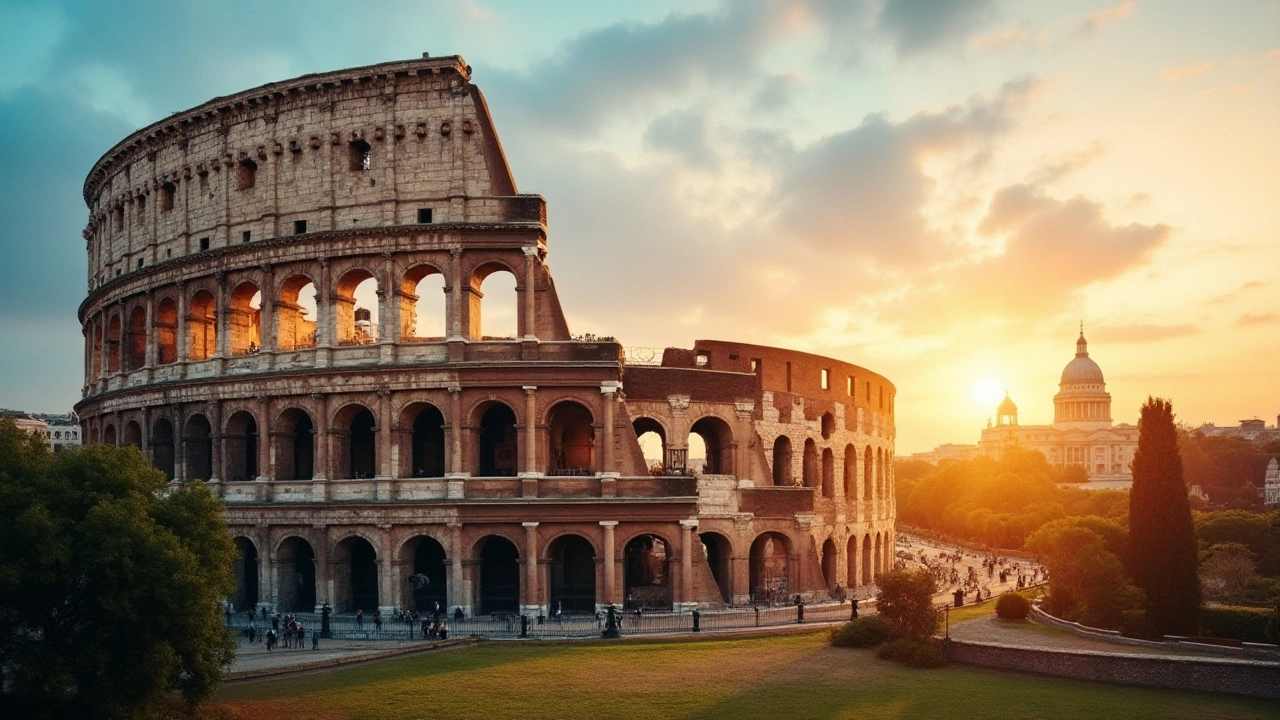Discover the key structures of ancient Roman architecture - from the Colosseum to Roman concrete - and how they still shape modern buildings, infrastructure, and urban design today.
Roman architecture: lasting ideas you can see today
Roman architecture still shapes cities, roads, and buildings you use every day. Walk past a subway arch, a courthouse dome, or a city bridge and you’re seeing Roman ideas at work. They invented concrete mixes, perfected the arch and the vault, and built structures meant to last. That mix of engineering and clear design is what made Rome reusable across centuries.
Want to spot Roman influence fast? Look for arches, domes, and long straight roads. Arches transfer weight efficiently so buildings and bridges can span bigger spaces. Domes cap large interior spaces without columns crowding the floor. Vaults carry heavy loads along corridors and baths. If a building uses repetitive arches or large semicircular windows, it likely borrows from Roman grammar.
Material and method matter. Romans mixed lime, volcanic ash, and rubble to make concrete that set underwater. They combined brick facing with concrete cores. This allowed curved shapes and thin shells that still surprise engineers today. Metal clamps and careful stone cutting also kept monuments standing through earthquakes and reuse.
How Romans planned cities matters too. Their grid streets, standardized monuments, aqueducts, and sewers aimed for utility and hygiene. The network idea linking public buildings, roads, and water made cities easier to govern and more livable. You can spot that planning in many European towns and colonial cities around the world.
If you’re renovating or designing, you can borrow Roman logic without copying styles. Use repeated arches to frame windows or doors. Consider load-bearing vaults to open interior space. Favor strong simple proportions: pediments, columns, and clear sight lines make spaces feel stable and grand without being flashy.
For travelers, prioritize a few features when visiting old sites. First, study the plan before you go: where is the forum, temple, and main road? Second, walk elevation lines—stand at ground level and then climb to a viewpoint to see domes and roofs. Third, notice reused stones and carved fragments; Romans often recycled older monuments into new buildings.
Preserving Roman buildings requires understanding original materials. Modern mortar or cement can trap moisture and damage ancient masonry. Conservation often uses lime-based mortars and controlled drainage to protect foundations. If you care about heritage, support projects that favor traditional materials and local expertise.
Key sites and simple lessons
See the Pantheon to study an intact dome and how light shapes space. Visit the Colosseum to read the arch and tier system for crowd flow and sight lines. Walk an aqueduct like Pont du Gard to notice modular spans and water grading. At baths, study circulation: pools, heating, and social layout. These sites show practical solutions you can adapt: daylight control, layered circulation, and robust materials for long life. Start noticing them on your next walk today.
Curious where to read more? Look for articles on ancient Roman engineering, revival styles like Renaissance and Beaux-Arts that borrowed Roman ideas, and practical guides to spotting classical features in your city. Roman architecture is both a toolbox and a style—once you learn the basics, old buildings tell clear stories.
Explore how ancient Roman architecture's grids, forums, aqueducts, and roads still guide modern urban planning, with practical lessons and real‑world examples.
Explore the incredible techniques behind ancient Roman architecture—uncover their iconic arches, concrete secrets, and groundbreaking innovations.
Immerse yourself in the grandeur of Roman architecture as we explore its lasting influence on modern design. This article delves into the architectural innovations and construction techniques that have stood the test of time. Discover fascinating elements of Roman design such as the use of arches, vaults, and aqueducts. Learn about key structures that exemplify Roman architectural excellence and gain insights into how these ancient techniques continue to inspire today's architects. By understanding Roman architecture, one can appreciate the blend of creativity and engineering that shaped an era.
This article delves into the ingenuity and artistry of Ancient Roman architecture. It explores the principles and techniques that made Roman structures stand the test of time. Discover how the Romans innovated in their use of materials, design, and engineering to create iconic buildings and infrastructure.




